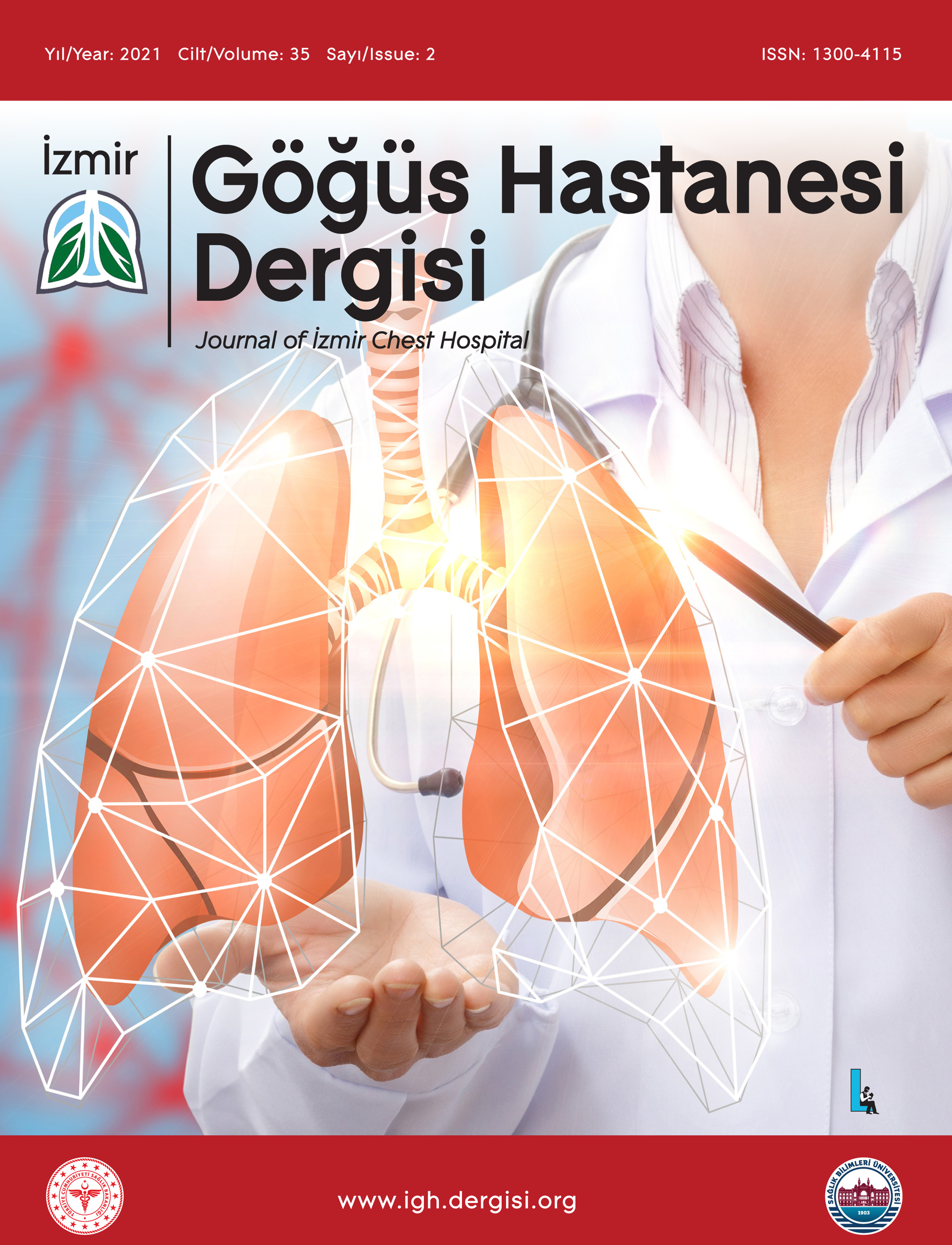İATROJENİK PNÖMOTORAKSLAR: İNSİDANS AZALDI MI? NEDEN?
Özgür KATRANCIOĞLU1, Şule KARADAYI1, Ekber ŞAHİN1, Nurkay KATRANCIOĞLU21Cumhuriyet Üniversitesi, Göğüs Cerrahisi, Sivas, Türkiye2Cumhuriyet Üniversitesi, Kalp ve Damar Cerrahisi, Sivas, Türkiye
Amaç: İatrojenik pnömotoraks (İP), tanı ve tedavi amacıyla toraksa yapılan invaziv girişimlerin önemli bir komplikasyonudur ve insidansı büyük ölçüde bilinmemektedir. Bu çalışmanın amacı İPa neden olan invaziv girişimleri, olgularımızı ve insidansdaki düşüşün tartışılmasıdır. Yöntem ve Gereç: Ocak 2008 ile Nisan 2018 tarihleri arasında hastanemizde İP tespit edilen olguların kayıtları retrospektif olarak incelendi. Olgular yaş, cinsiyet, İP nedenleri, tedavi yöntemleri ve sonuçları açısından analiz edildi. Bulgular: Çalışmanın yapıldığı zaman aralığında hastanemizde İPa neden olabilecek girişimlerin sayısı 20368 idi ve % 0,22 oranında İP gelişti. İPa en sık mekanik ventilasyon tedavisi, 2. sıklıkta santral venöz kateterizasyon ve 3. sıklıkta da torasentez neden olmaktaydı. İP oranımız geçmiş dönemde kliniğimizin yaptığı çalışma ile kıyaslandığında, istatiksel olarak anlamlı şekilde azalmıştı. Sonuç: İnvaziv girişimlerde pnömotoraks riski temel olarak uygulayan klinisyenin tecrübesine ve işlemin kendisinin risk faktörlerine bağlıdır. Girişimlerin risk faktörleri önceden bilinir ve dikkate alınırsa, ayrıca işlem tecrübeli klinisyenler tarafından yapılırsa, İP oranı hastanemizde olduğu gibi düşürülebilir.
Anahtar Kelimeler: İatrojenik pnömotoraks, etiyoloji, insidansIATROGENIC PNEUMOTHORAX: IS ITS INCIDENCE DECREASE? WHY?
Özgür KATRANCIOĞLU1, Şule KARADAYI1, Ekber ŞAHİN1, Nurkay KATRANCIOĞLU21Cumhuriyet Üniversitesi, Göğüs Cerrahisi, Sivas, Türkiye2Cumhuriyet Üniversitesi, Kalp ve Damar Cerrahisi, Sivas, Türkiye
Aim: Iatrogenic pneumothorax (IP) is an important complication of invasive procedures performed in the thorax for diagnosis and treatment, and its incidence is usually unknown. The aim of this study is to discuss invasive procedures that cause IP, reasons, and reductions in incidence. Material and Methods: Records of cases with IP detected in our hospital between January 2008 and April 2018 were retrospectively reviewed. The cases were analyzed in terms of age, gender, IP causes, treatment methods and results. Results: At the time of the study, the number of interventions to cause IP in our hospital was 20368 and IP was observed at 0.22%. Mechanical ventilation therapy was the most common cause of IP, central venous catheterization was the second most frequent, and thoracentesis was the third most frequent cause. Our IP ratio decreased statistically significantly when compared with the work done by our clinic in the past period. Conclusion: The risk of pneumothorax in invasive procedures depends mainly on the experience of the practicing clinician and the risk factors of the procedure itself. If risk factors for interventions are known and taken into account, and if the procedure is performed by experienced clinicians, the IP rate can be reduced as well as in our hospital.
Keywords: Iatrogenic pneumothorax, etiology, incidenceMakale Dili: Türkçe






